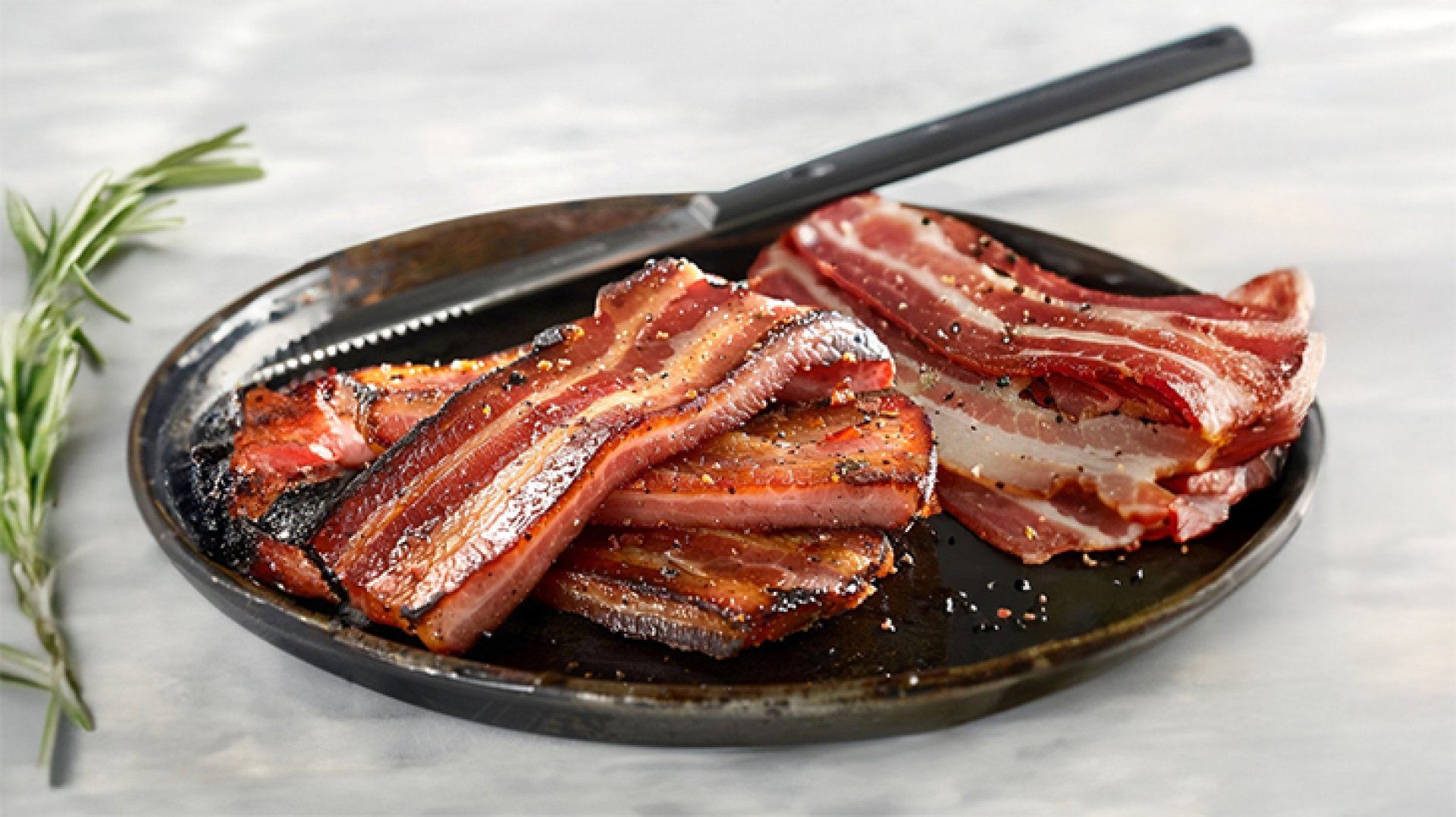Bacon

Did you know that China was the first country to produce Bacon around 1,500 BCE, appearing in the form of Salted Pork Belly? It's said that ancient Chinese people would salt pork belly, boil it until the water evaporated, and then dry it to make the earliest form of Bacon. Today, Rimping Supermarket will take you on a deep dive into the history of this popular breakfast staple.
From Chinese Pork Belly to Roman Petaso (1,500 BCE - Roman Empire)
Later, it is hypothesized that Bacon became known in the Roman Empire through conquests in the Middle East. Romans began to learn how to cure pork with salt, as well as pig breeding methods, and developed their own version. The Romans would boil pork with figs, then dry it and add pepper, calling it Petaso.
Anglo-Saxon Smoking and the Origin of "Bringing Home the Bacon" (Middle Ages - 12th Century)
Over time, during the European Middle Ages, the Anglo-Saxons refined the art of making Bacon by introducing smoking techniques. This transformed salted pork into the Bacon we know today. Soon, this form of Bacon spread throughout Europe.
In the 12th century, a story tells that a church in Dunmow, England, held an event called The Dunmow Flitch Trials. Couples would come to confirm that for one year and one day, they had not quarreled. A judge would then determine if this was true and believable. If so, they would receive Bacon to take home. This became the origin of the idiom Bringing home the bacon.
In the 12th century, Bacon was called Bacoun in English, referring to all kinds of pork. However, over time, the definition of the word narrowed to just Bacon, meaning cured pork.
Bacon's Popularity in the US and the Difference Between Cuts (17th Century - Present)
In the United States, Bacon gained popularity during the colonial period as European settlers introduced Bacon-making techniques. With its long shelf life and rich flavor, Bacon became a staple in American households, commonly eaten with bread, sandwiches, or burgers for breakfast.
Throughout the centuries, Bacon has undergone countless developments, with each region having its own recipes and techniques, including different seasonings and cutting methods for both thick and thin slices.
- Thick-cut Bacon can be up to 10 millimeters thick. It is juicy with a crispy exterior and a tender interior, perfect for a BLT (Bacon, Lettuce, and Tomato) sandwich.
- Conversely, thin-cut Bacon is usually about 1.5 millimeters thick. It cooks quickly and has a crispy texture, commonly used in salads, pasta, or wrapped around other ingredients like vegetables and other foods.


